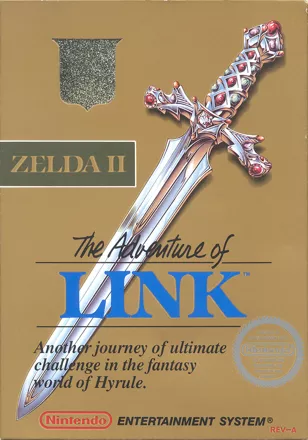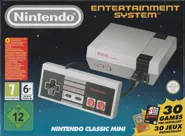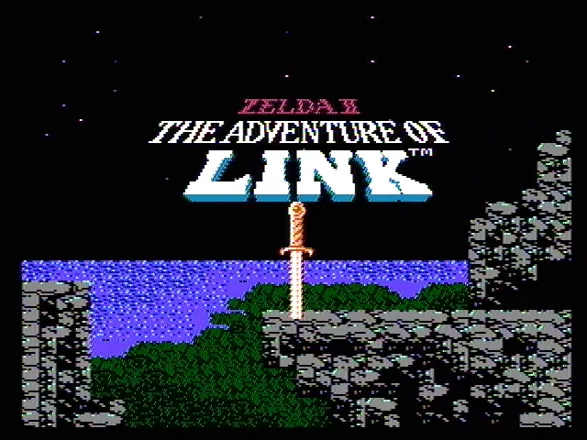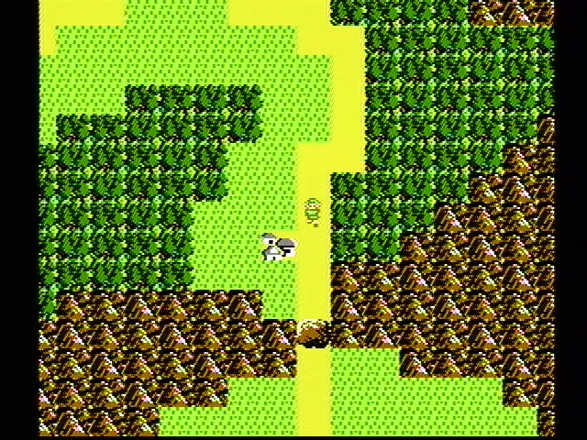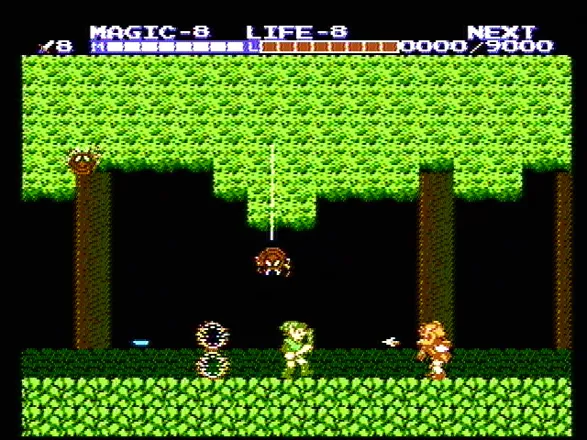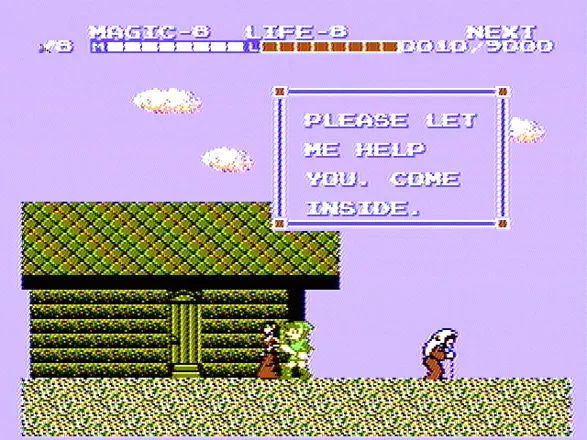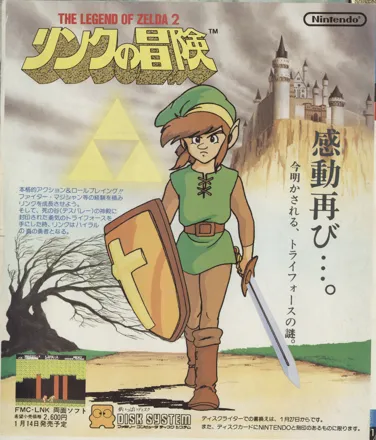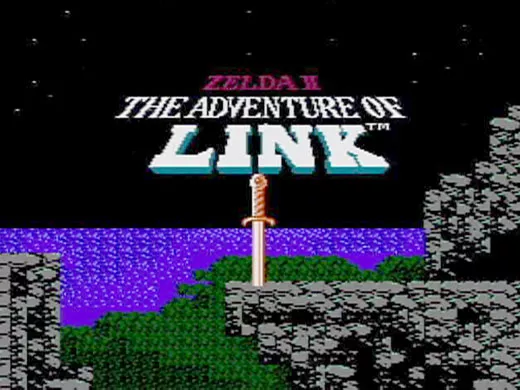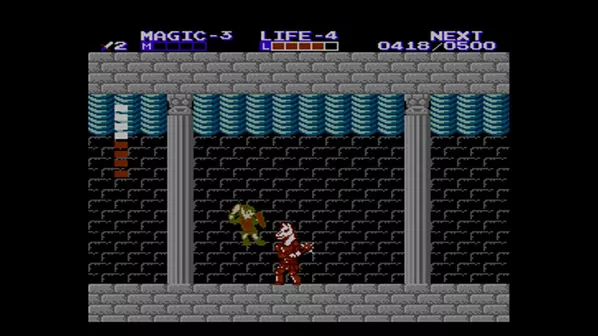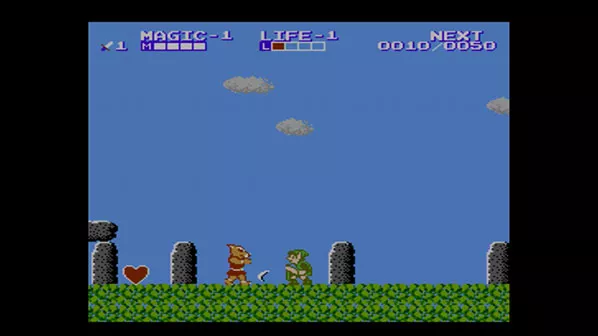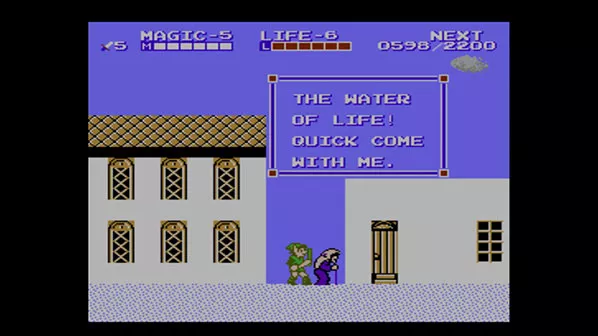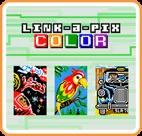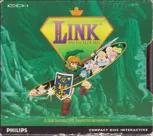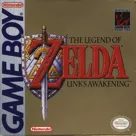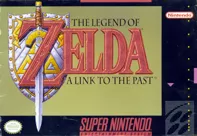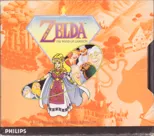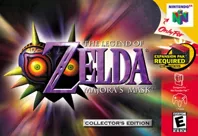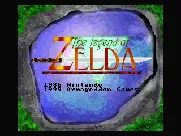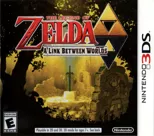Zelda II: The Adventure of Link
Description official descriptions
Link has just turned sixteen, and discovers a strange birthmark on his hand. With the help of Impa, Zelda's nursemaid, Link learns that this mark is the key to unlock a secret room where Princess Zelda lies sleeping. When young, Princess Zelda was given knowledge of the Triforce of power which was used to rule the kingdom of Hyrule, but when a magician unsuccessfully tried to find out about the Triforce from Zelda, he put her into an eternal sleep. In his grief, the prince placed Zelda in this room hoping she may wake some day. He ordered all female children in the royal household to be named Zelda from this point on, so the tragedy would not be forgotten. Now, to bring Princess Zelda back, Link must locate all the pieces of the Triforce which have been hidden throughout the land.
Each piece of the Triforce is in a temple guarded by a powerful monster which must be defeated. At the same time, Ganon's underlings are still around and gaining in strength and number. It is said Ganon could be brought back to life by sprinkling the blood of the one who defeated him on the ashes - which was Link himself.
Zelda II: The Adventure of Link is an action role-playing game, and a sequel to The Legend Of Zelda. The gameplay alternates between a top-down view (when traveling the land) and side-scrolling perspectives (when fighting, in a temple, or town). In the top-down view, Link cannot do much except for walking: in the side-scrolling action view, however, he can fight, cast spells, collect items and talk to people.
When Link encounters an enemy in the wilderness, or enters a location which contains enemies, he can fight them with his sword. If Link is at full health, his sword can be thrown, but when he is hurt, he can only fight in melee. Link has a shield which protects him against some of the enemies' attacks if they strike the shield. Touching an enemy or getting hit by their attacks decreases Link's health. If he runs out of health, he loses a life. If he loses all his lives, it's Game Over. Link can replenish his health completely by encountering a fairy in the wilderness, or by using the services of a healer in a town.
Link also has a "magic" meter. He can cast spells (as long as he has learned them) if he has some magic power left. Spells cost a various amount of magic power. They have various effects: they cure Link, allow him to jump very high, shoot fireballs etc. The magic power meter can be refilled by collecting blue and red jars sometimes left behind by enemies.
When Link slays an enemy, it might leave behind an item, or give Link some experience. When Link gains enough experience, he gains a level, which allows him to buy weapon power, maximum magic, or maximum health upgrades for his experience points. The player can also decide not to buy anything and stockpile his experience points for later use.
There are some items to be found that are necessary to get past certain points in the game. The Adventure of Link features a battery backup so games can be saved without needing a password system.
Spellings
- リンクの冒険 - Japanese spelling
Groups +
Screenshots
Promos
Videos
See any errors or missing info for this game?
You can submit a correction, contribute trivia, add to a game group, add a related site or alternate title.
Credits (NES version)
10 People
| Executive Producer | |
| Producer |
|
| Director |
|
| Designer |
|
| Sound Composer |
|
| Programmer |
|
| Director |
|
Reviews
Critics
Average score: 77% (based on 52 ratings)
Players
Average score: 3.4 out of 5 (based on 200 ratings with 12 reviews)
Nowhere to run but left and right in this Zelda game--and it's a masterpiece
The Good
This Zelda broke with the last in that it is a side-scrolling platformer, and despite the howls of some, it is an excellent game on par with the original. In this game, strategy and skill are needed in equal measure to overcome the varied and clever foes that you meet in the lush gameworld. What makes it an unforgettable game is the tightness and reliability of the gameplay, the genius design, and the joy of beating the most fiendishly difficult Zelda game to date.
From towns, forests, plains and caves to palaces, graveyards, mountains and lava fields, Hyrule is a great place for an adventure. Each major location in the game has a group of new foes to test Link's mettle on, while old standards make constant reappearances in the palaces. Each town has a tone and personality all its own, and welcome diversions from the main quest can be found in every one of them. The design and artwork on your opponents is impressive, particularly on the large and well-drawn bosses, and multiple strategies are available for dispatching each one.
The main map of the game is viewed from overhead, and it encompasses many screens. Link can walk on the path with impunity, but enemies appear when he leaves it, and if he runs into one of these, a platforming scene filled with enemies appears, and Link must battle his way out. These enemies are often avoidable (unless one is in a swamp), but the palaces, towns and other special areas are all side-scrolling affairs.
One of the greatest additions is experience. Link actually improves beyond simply gaining life containers in this Zelda game--he can improve his vitality, his battle ability, and his magical skill. Each attribute can gain up to eight levels of experience. Link can also learn diverse magic spells from each town's wise man, and is even taught a few very useful swordplay tricks from knights he meets along the way. The downward and upward jumping attacks he learns open up a whole new world of strategy for defeating enemies, and some foes cannot be destroyed without them. Link in the beginning and Link at the end aren't differentiated only by heart containers and items in this game--the later Link gains inherent skills that do not rely on finite items. No bow exists in this game; no bombs either.
Magic makes up for these lost items. Having worries about being able to navigate an area without getting hit? Cast Shield on yourself, and the damage you take will be halved. Concerned that you need extra maneuverability to avoid dangerous foes in an area? Cast Jump, which doubles your jumping height, and leap circles around your opponents--or simply cast Fairy, which turns you into a tiny flying pixie, and soar above the trouble avoiding it altogether. The unblockable boomeranging maces of the Doomknockers getting you down? Cast Reflect and watch your shield stop a mace in its tracks, or cast Spell and turn the troublesome enemy into a weak and quivering pile of slime. There is always a place for magic in a combat situation, although the precious supply is often used on Life, the spell that recharges one's health.
That's because your confrontations with enemies will take up the majority of the game. And there are some memorable and devious foes to be had here. As far as ordinary enemies, in Parapa Palace you will face your first Ironknuckle. This armor-clad knight stalks inexorably towards you, and once in range proceeds to swing his sword high and low in random patterns, moving his shield intelligently up and down to block your sword. Early on, you will see one marching toward you and mentally count off a few of your precious health squares as you imagine the bloody battle ahead of you. It isn't attacking this denizen of the palaces that is difficult; it's doing so while simultaneously defending from his onslaught that causes the problems.
Later in the game, however, you will have developed your own tactics that turn this enemy, even his later blue incarnation that hurls knives as he stabs, into a pushover. And this can be done a number of ways. One might notice that stabbing high and immediately lowering one's guard in mid-stab will cause the Ironknuckle to drop his guard in unison and absorb the blow. One might discover that the Ironknuckle only unleashes his fearsome fusillade of blows after being struck, and then cools down. One might even develop a strategy of jumping and attacking to defeat these enemies. These tactics will be missed in the first several frenzied combats of both fighters stabbing and blocking, but they will eventually render a once feared enemy harmless. And that's part of the magic of this game design that is present throughout the game. Enemies are not dull patterns to be learned and disposed of in a single dull way so much as they are lifelike and random, and always potentially dangerous to any strategy.
As you progress, harder foes such as the fearsome, axe-wielding Dairas appear. These anthropomorphic, mohawked alligators only swing high and have no shield, but that matters little since their axes cannot be blocked by even a magic-enhanced shield--Link cannot stand off with them for long or he will be seriously hurt. One must stab and charge, stab and flee, or jump and stab to defeat these and suffer minimal damage. The red Daira throws axes, and it is nearly impossible to flawlessly defeat one. In fact, Link is unlikely to walk away from a dead red Daira without having lost a significant amount of health. Certain enemies carry and throw maces that can only be blocked after Link casts Reflect, certain enemies can only be destroyed by fire. Yet these each can be avoided or defeated without the use of magic. Only in a few situations is Link directly forced to encounter an ordinary enemy, and therefore if one strikes you as particularly difficult, it can be simply avoided.
If it is an Eagle Knight you've been cornered by, expect to be seriously injured. These enemies are like the Ironknuckle in that they use a sword and shield intelligently, but they also are acrobatic jumpers and throw knives furiously at all times, causing considerable damage. These, only found in the last palace, can confound any careful strategy because their patterns of attack are easily readable but extremely difficult to react to properly. Your brain 'knows' the proper reaction for defense or offense at any one time, but tying the two together against such an agile opponent can be very difficult.
Bosses are all fun, different, and well-designed. Starting with a giant horseheaded knight toting a large mace, there is a soldier with three heads, an Ironknuckle who thought to bring his horse along, a giant teleporting wizard, a clumsy ogre with a flail and impenetrable helmet, and a lava-dwelling dragon. That's just the ordinary palaces. In the final palace, you must face off against the mythic Thunderbird and of course, Dark Link. Dark Link was an ingenious bit of game design, as it has all the standard moves that you do, and yet it is somewhat more clever about using them than you are. Yet surprisingly simple strategies can be found to defeat this boss. I don't mean cowering in the corner and tapping a button, but rather an approach that would be unexpected based on all your previous encounters--it's great design to require a fresh look at the final boss, asking the player to throw out what he or she has learned and try something new.
The exploration, town scenes, and pure adventure in this game are all great, but the combat system is what really adds to the fun factor, and is so elegantly designed that it deserved the bulk of my remarks. It should go without saying that Link controls like a dream, despite a knockback when hit that Castlevania, Actraiser 2 or Ghosts 'n' Goblins fans will sorrowfully recognize. Those latter games also have something in common with this one--Zelda II is fiendishly difficult. Link has three lives, and after that must start all the way back at the beginning of the game map, which encompasses many screens. Extra lives are there to be had along the way, but that doesn't dilute the challenge of this game, and defeating Dark Link at the end after battling through dozens of Lizalfos and Eagle Knights, Ironknuckles and Darknuts, Bits and Bots and Moblins and Goriyas, you'll feel a palpable sense of accomplishment.
And then, as in Chrono Trigger, the player is allowed to start again with the same stats, but with a greater challenge. This is a game I just recently replayed after defeating it at the age of seven, and it was as enormously satisfying now as it was then.
The Bad
The translation is poor, and speaking with the townspeople is rarely enlightening. Some secrets such as Bagu's Cabin or New Kasuto can be difficult to find or figure out. A few enemies virtually force you to take damage, because at times there is no proper way to dodge/block all the projectiles or foes that are coming at you. But these are just quibbles--this is a superlative game
The Bottom Line
Another great adventure in Hyrule. Side-scrolling and combat-heavy, this second Zelda game isn't a retread of the first and it doesn't suffer for it. Dust off your platforming skills and prepare your mind as well as your trigger finger, for there are puzzles and strategy to be found here in addition to the chaotic and first-rate combat.
NES · by J. P. Gray (115) · 2004
The Good
The world is a lot smaller compared to the first Zelda game and I appreciated that. The world is a lot smaller, but also has more detail. The original had an impressive size, but everything just looked the same with only a few changes per screen. Here the screens have been removed and you just walk around Hyrule's areas, There are; swamps, forests, mountain and of course water. I'd say that sacrificing size for detail is a good thing, especially if the world is still quite huge afterwards.
The gameplay is a lot faster compared to the original Zelda, not only do you walk faster, but the fights are also a lot faster and harder. You have to duck, jump and stab in order to kill your opponent. Later on you also discover magic spells and new moves that make the fights even bigger and of course you run into new enemies with different tactics. Nearing the end of the game, each screen I left without taking damage felt just like beating the final boss.
The game has a nice balance between puzzles and fighting, for me at least, which means barely any puzzles and a lot of fighting. The only "puzzles" you do encounter are the temples which are very hard to navigate through and some areas like Death Mountain. This is the NES, so you can't really demand anything else. There are still a lot of secrets to find though and some are mandatory if you want to progress through the story.
The fact that Hyrule is at war is emphasized more in this game, in the original Zelda there weren't any villages or soldiers or anything else to give you the impression you were really saving something. The people in Zelda II beg for help when you talk to them and the soldiers try to help you by teaching you new moves. It's sad that Nintendo didn't keep using this because it's really nice to have the feeling you are doing something worth doing, Zelda games are still pretty awesome, but why say no to even more atmosphere?
The overall story is a little bit more original than in the first Zelda. In the first Zelda game all you had to do was save the princess from her captor, which wasn't really the best story ever written. Here you are trying to find the Triforce in order to wake up a Princess from a very long time ago. It's still not the most amazing story, but certainly an upgrade. Also nice is that you no longer play as a kid, but as an older Link, this way the evil that threatens to take over the kingdom seems just a little bit more threatening.
The Bad
The difficulty curve is all over the place, you start of pretty easy, aside from having to go through a tunnel which requires you to have the item you'll find in the temple on the other side, but after that there is a giant peak in the middle. After that peak (Death Mountain) it becomes easier again. The final boss is very hard, but it doesn't beat Death Mountain. A lot of people may not even make it to Death Mountain, so if you are planning to play through this, I wish you good luck.
It's you against an army of enemies and if you die three times, you are sent back to the start of the game. This is very annoying because it doesn't make the game harder at all, you just go back to what you were doing with fresh health. In the original Zelda you would just respawn at the start of the dungeon if you died, that was a good way to punish me for dying, this however is way too cruel. It's also a problem that the extra lives you find do not return after you picked them up, so if you die, that live is lost forever.
The Bottom Line
Zelda 2 is (one of) my favorite Zelda game(s) out there and for good reasons; the action is fast, the story is better and the puzzles are do-able. Aside from an unreasonably difficulty curve and some weird choices regarding lives, this is a very good game.
However the difficulty is still too much to ignore, so I have to warn people that unless they truly want to play this and know it is very hard, they might want to stay away from it. It's never fun to buy a game and feel like it wants to punish you for playing it, so if you don't want to put up with that, you might want to stick to the (not as hard) Legend of Zelda.
NES · by Asinine (956) · 2011
Definitely the most challenging Zelda
The Good
Very, very challenging game. The side-scrolling parts make things much more difficult, especially later in the game; although, by dungeon #2, things have gotten pretty hard. This made for a very enjoyable game, especially when overcoming obstacles and accomplishing various objectives (getting items, raising levels, finishing underworld dungeons).
The Bad
Some parts of the game were just TOO difficult (i.e., Death Mountain -- getting the hammer...took me at least a week). The final dungeon (end of the game) is also very hard. By the time you get to the Thunderbird, you'll be lucky to have any life and magic left. Good luck beating him. I was never able to finish this game on the NES. It took me about 15 years from the time I bought it until the time I used cheat codes on a NES emulator to finish it. Using the original NES controller was almost impossible for this game. The NES Max helped a lot. The music is this game was also a little sub-par. Zelda 1's music was better, I thought.
The Bottom Line
A great sequel for Zelda 1. Play that game first (play it to death, since that is one of the greatest video games of all time), then get a hold of this. A step-up in challenge and graphics. Classic game.
NES · by J O (8) · 2004
Discussion
| Subject | By | Date |
|---|---|---|
| One of my favourite NES games so far, I easily prefer it to Zelda 1 | Andrew Fisher (700) | Mar 27, 2024 |
| So this is the black sheep?.. | Unicorn Lynx (181577) | May 30, 2012 |
| Only one who like this more than the first? | Simoneer (29) | Jun 15, 2010 |
Trivia
Cartridge
Zelda II: The Adventure of Link was the only other Nintendo-licensed NES title to have the honor of being a gold cartridge besides the original Legend of Zelda.
ERROR
Inside a house within one of the towns is an NPC who simply says "I AM ERROR" when talked to. While many gamers at first found this to be a mistake in the code, there is another NPC later in the game that tells you Error knows a secret, proving that Error is his name and not an error.
It is possible that Error’s name was originally "Errol" (like the Australian-American actor Errol Flynn), but due to the letters "R" and "L" being allophones in Japanese, the programmers mistyped the name as "Error" in translating the game to English.
Platforming
As of 2005 Zelda II is the only game in the series to use a standard jump button that doesn't require the use of a power-up, or running off the side of a ledge to clear a gap.
Town names
Many of the villages share their names with characters from Ocarina of Time (Ruto, Rauru, Mido and Saria, etc.)
Interestingly enough, Ocarina of Time is considered to be the first Zelda game continuity-wise, so it's possible the villages are named in their honour, at least in the case of the Sages (Rauru, etc.).
Awards
- Electronic Gaming Monthly
- November 1997 (Issue 100) - ranked #72 (Best 100 Games of All Time)
Information also contributed by CaptainCanuck and Mark Ennis
Analytics
Related Sites +
-
Classic NES Series for the Game Boy Advance
Covers the line-up of the new Game Boy Advance series of NES Classics. -
Howard & Nester do The Adventure of Link
A regular feature in Nintendo Power magazine, Howard & Nester was a comic strip about two game whizzes who would one-up each other, while disclosing hints and tips, in the settings of various recently-released games for the NES platform. In the March/April 1989 two-page installment, they figure out how to extend the bridge in Saria. -
OC ReMix Game Profile
Fan remixes of music from Zelda II: The Adventure of Link. -
RPG Classics Zelda 2 shrine
Contains extensive information on this game, including descriptions of bosses, items, magics as well as maps and a walkthrough. -
Video review of Zelda II: The Adventure of Link
The Angry Video Game Nerd, James Rolfe, reviews Zelda II: The Adventure of Link on NES. -
Zeldapower.com Forums
Message Board for all of the Zelda games
Identifiers +
Contribute
Are you familiar with this game? Help document and preserve this entry in video game history! If your contribution is approved, you will earn points and be credited as a contributor.
Contributors to this Entry
Game added by Servo.
Nintendo 3DS added by ResidentHazard. Wii U added by Michael Cassidy. Nintendo Switch added by Kam1Kaz3NL77. Game Boy Advance, Wii added by gamewarrior.
Additional contributors: Satoshi Kunsai, Jeanne, Guy Chapman, NH, Alaka, monkeyislandgirl, Pseudo_Intellectual, LepricahnsGold, Perfil Falso, Patrick Bregger, Thomas Thompson.
Game added September 28, 2002. Last modified April 17, 2025.


